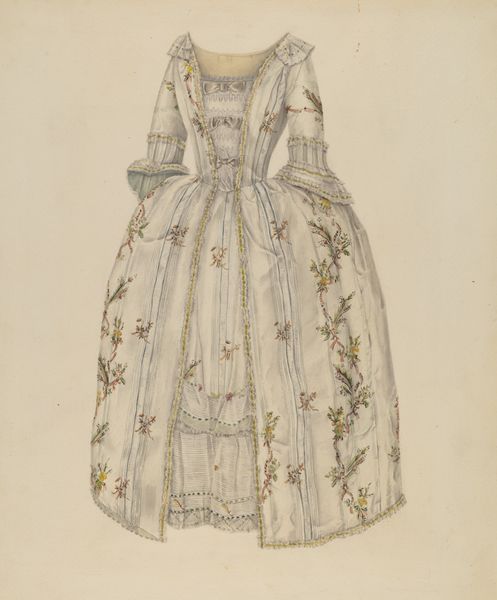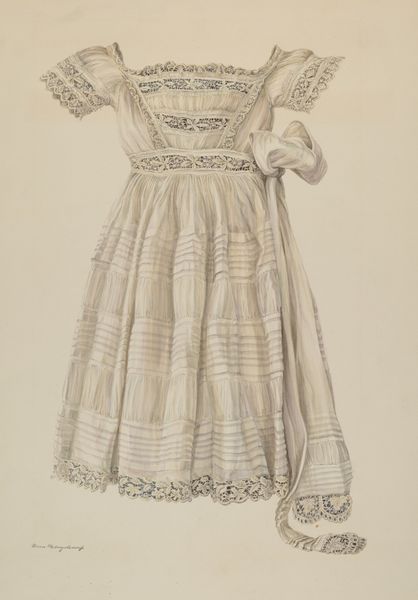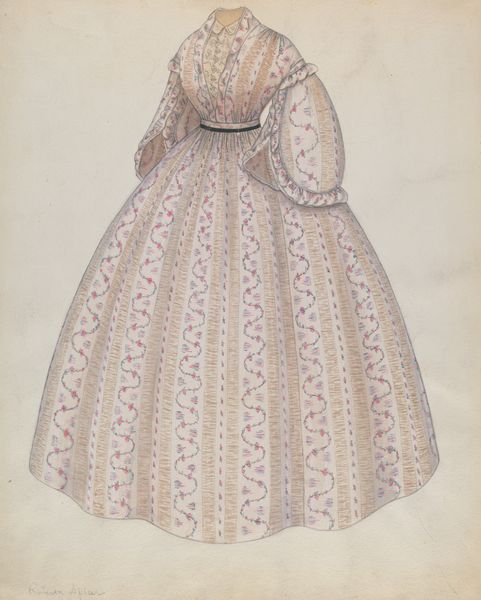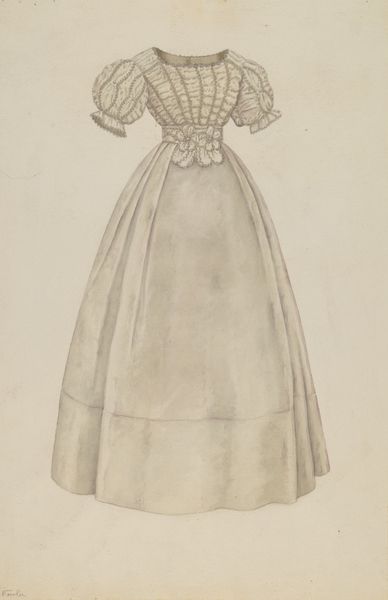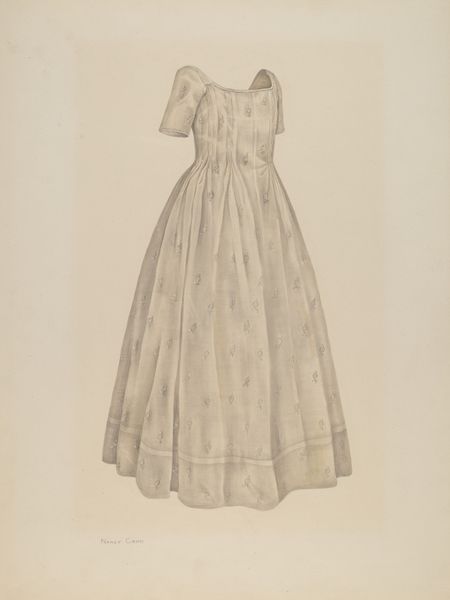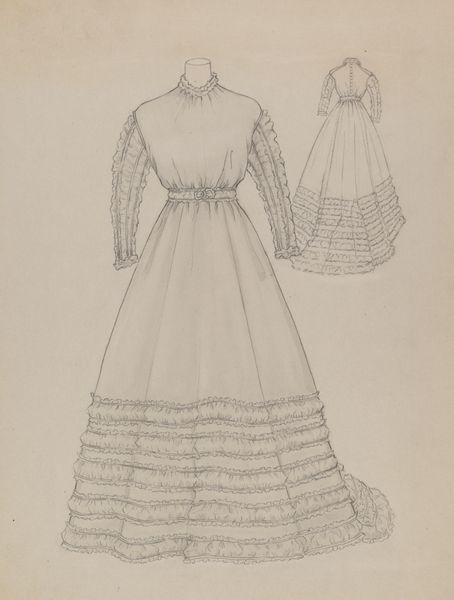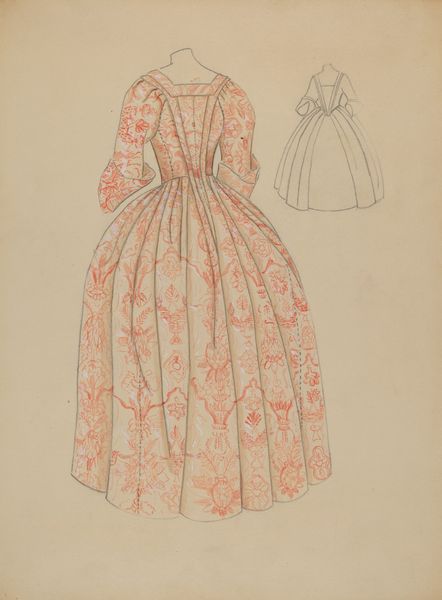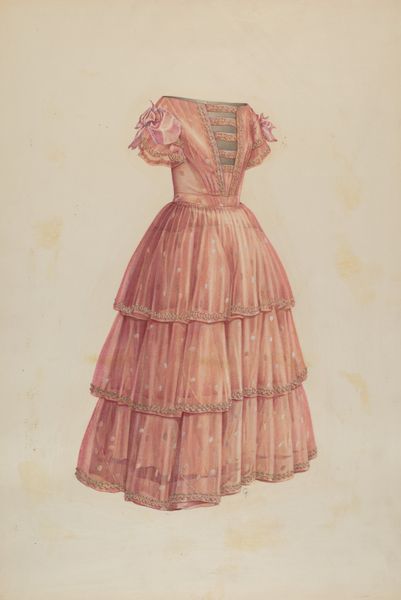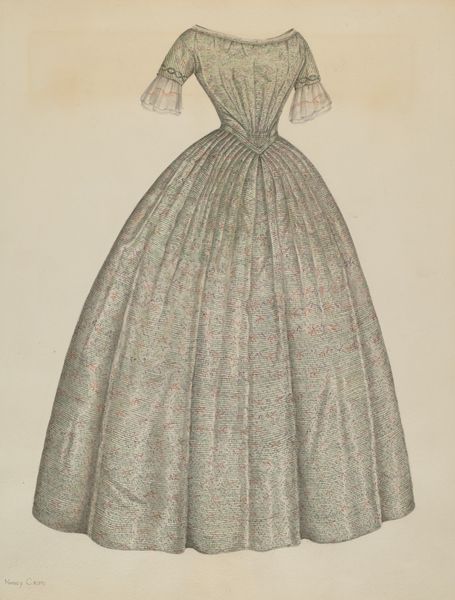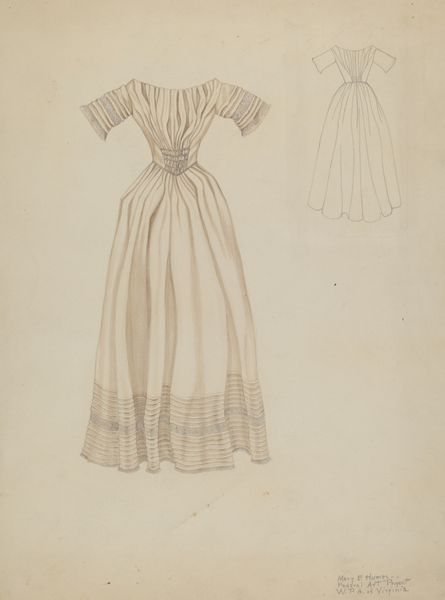
drawing, coloured-pencil, pencil
#
portrait
#
drawing
#
coloured-pencil
#
pencil sketch
#
figuration
#
pencil
#
wedding dress
#
academic-art
#
decorative-art
Dimensions: overall: 45.7 x 38 cm (18 x 14 15/16 in.)
Copyright: National Gallery of Art: CC0 1.0
Curator: This is Nancy Crimi's "Wedding Dress," a coloured pencil and pencil drawing from around 1937. Editor: My first impression is of... ghostliness, actually. The dress is so precisely rendered, but without a body, it's like a hopeful shroud. A beautiful one, but still… Curator: That's an interesting reading. I see it as situated within the history of fashion and gender, particularly during the interwar period. It's more than just a pretty garment. Consider the social expectations around marriage and the restrictive roles often imposed on women at the time. Editor: True, marriage, historically, has been less about love and more about… societal structuring. The dress, in that light, feels almost like a uniform, doesn't it? Even those delicate ruffles feel like… enforced femininity. Curator: Exactly. We could analyze the absence of the body, as you pointed out, through a feminist lens. Is it an erasure, or a suggestion of the woman's agency being secondary to the institution of marriage itself? And is the detailed depiction and the choice of rendering so vividly with coloured pencil maybe be an act of rebellion, an emphasizing what is, despite everything, deemed appropriate or “feminine"? Editor: Perhaps! Or maybe the artist just loved drawing ruffles! But, your reading… it does add a weight, a gravity, to what at first glance seems like just a lovely sketch. It's that tension, I think, between the beauty and the possible constraints it represents, that makes it so compelling. Curator: Ultimately, analyzing this artwork compels us to address issues around gender roles, the significance of sartorial choices, and their socio-historical contexts. Editor: I see it now: the sadness, the expectation, and the… almost desperate hope, all stitched into the fabric. It gives me chills.
Comments
No comments
Be the first to comment and join the conversation on the ultimate creative platform.
